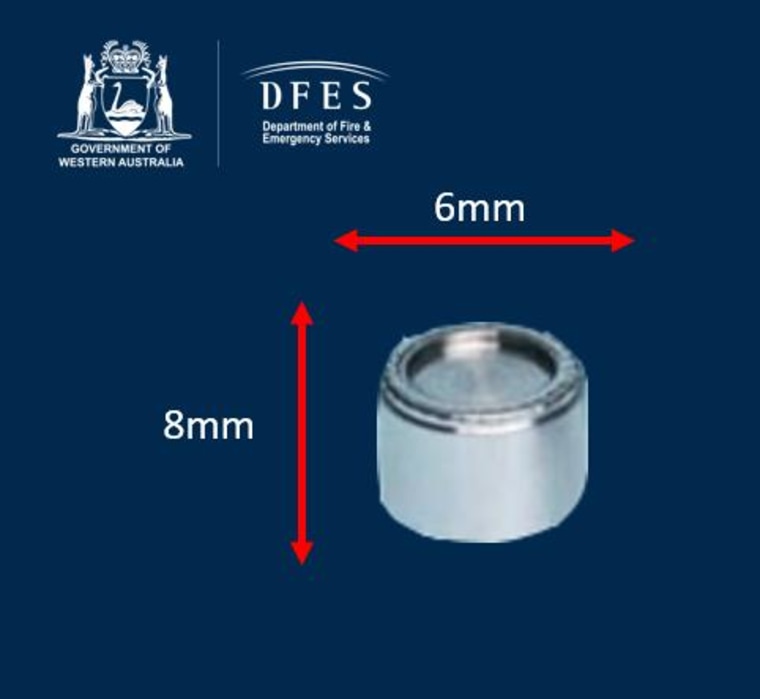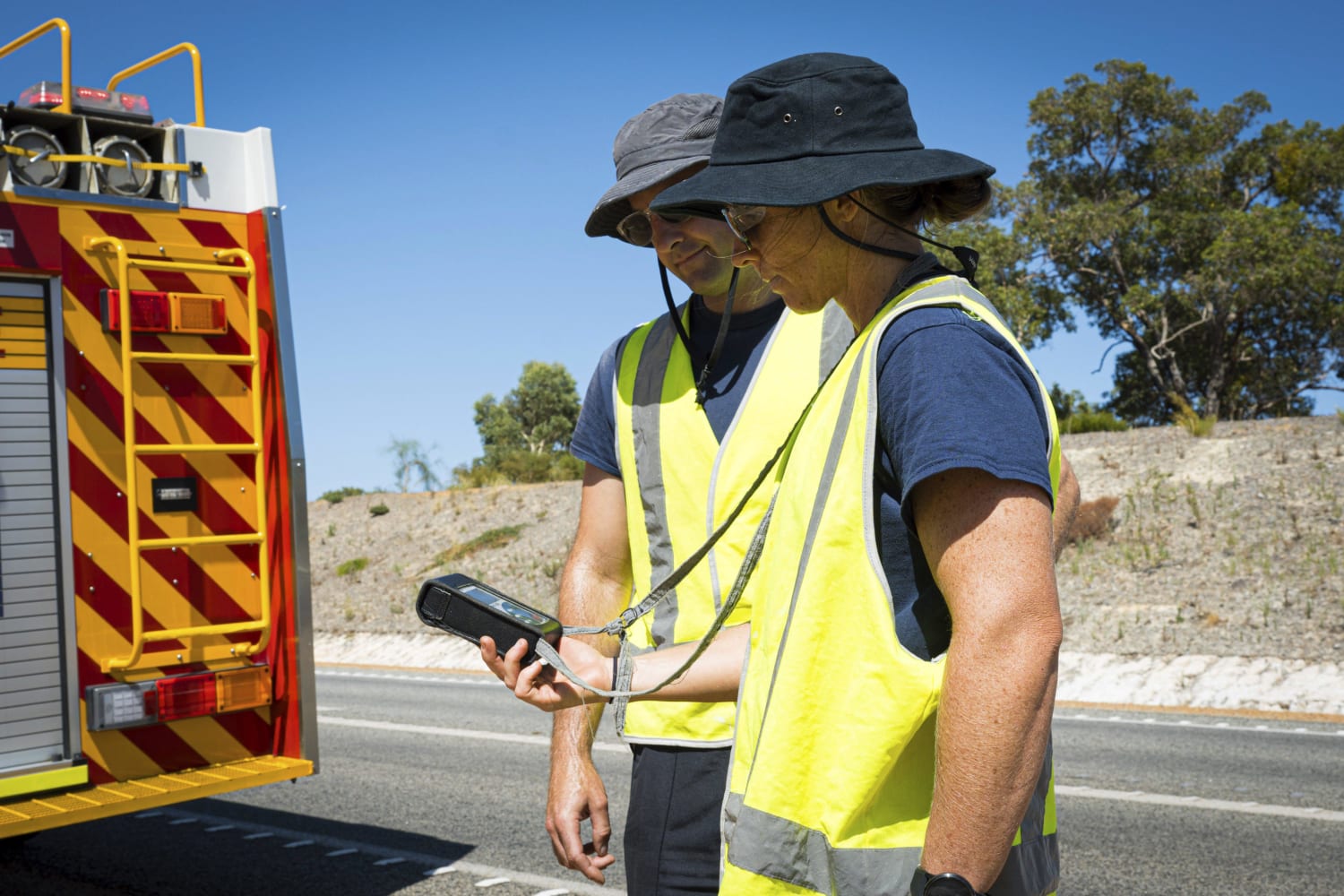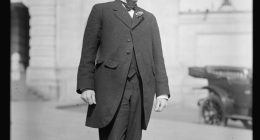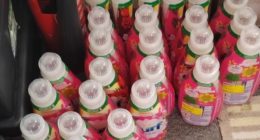Authorities were undertaking the daunting task of locating and securing the tiny capsule, which is believed to have fallen from a truck on Jan. 10 during its lengthy journey from a desert mine site near Newman to a storage facility in Perth.
Emergency services were first notified last Wednesday, officials said, and alerted the public last Friday.
“DFES and radiation specialists are searching along Great Northern Highway by driving north and south directions at slow speeds,” the Department of Fire and Emergency Services (DFES) said in a hazmat alert Monday, adding it was using survey meters to find the capsule by detecting radiation levels.
The truck arrived at Perth on Jan. 16, said DFES, while the emergency services were only notified about the missing capsule on Jan. 25 when a gauge was unpacked for inspection.
“Upon opening the package, it was found that the gauge was broken apart with one of the four mounting bolts missing and the source itself and all screws on the gauge also missing,” said the emergency services.
While the capsule cannot be weaponized, said the Department of Health in a statement Friday, it can cause “serious health consequences.”
The radioactive source of the capsule, Caesium-137, emits potentially fatal amounts of radiation, almost equivalent to receiving 10 X-rays in an hour and prolonged exposure can even cause cancer. It takes Caesium-137 almost 30 years to decay by half.
“It disappears quite quickly, compared to other radionuclides. However, short half-life means it’s quite active,” Hajime Kinoshita, a senior lecturer in materials chemistry at the University of Sheffield in the U.K., told NBC News.
“So, if somebody has it in their pocket or something, it’s not particularly great,” he said, adding that prolonged exposure could damage human cells.

Authorities have warned people to stay at least 5 meters from it.
“Exposure to this substance could cause radiation burns or severe illness — if people see the capsule or something that looks similar, stay away from it and keep others away from it too,” Western Australia’s chief health officer, Andrew Robertson, said in a statement Friday.
“If you are very close to the material or touching it, the radiation risk increases immensely and could cause serious damage to your health, including causing radiation burns to the skin.”
Concerns remained about the capsule potentially getting lodged in car tires. But the risk to passengers was low, said Kinoshita, as the organic material of the tires and the iron car frame should block the radiation.
Radioactive material is routinely transported around Western Australia, although under strict regulations, and is used commonly in medicine, industry, mining as well as research, Robertson told NBC News in a separate statement Monday.
“It is extremely rare for a source to be lost,” he said, adding that these radioactive sources are usually returned to the manufacturer at the end of their serviceable life.
Rio Tinto did not immediately respond to NBC News’ request for further comment.
Associated Press contributed.
Source: | This article originally belongs to Nbcnews.com









